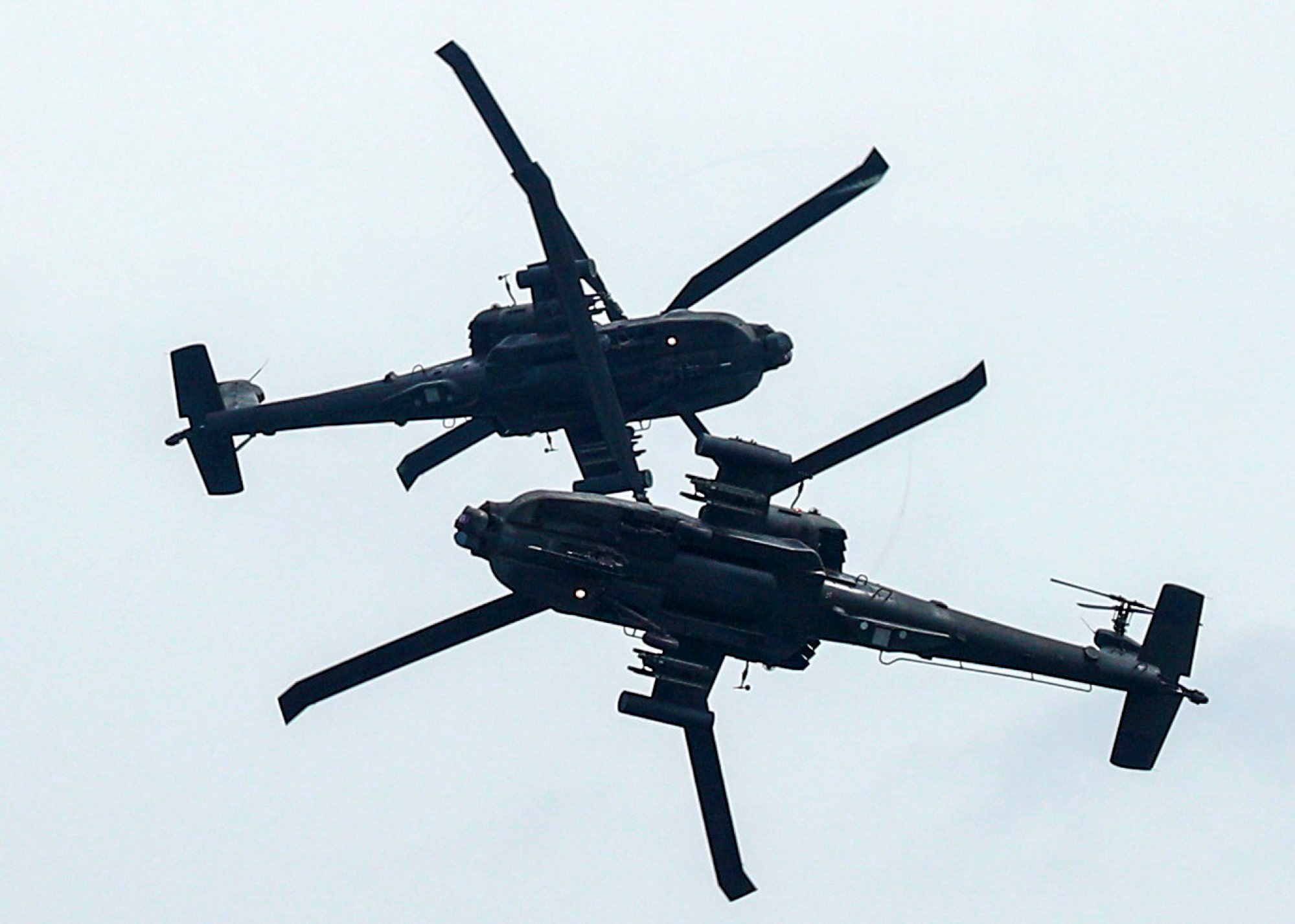Maria Siow

Defence strategies in the digital age have been forced to adapt to the constantly evolving demands of modern warfare, as the war in Ukraine has shown. Photo: dpa
Singapore late last month joined the growing ranks of Asian nations seeking to defend their digital borders with the formation of its military’s Digital and Intelligence Service (DIS).
Tasked with providing timely intelligence and safeguarding the island state against cyber threats, the Singapore Armed Forces’ fourth branch sits alongside its three traditional ones – the army, navy and air force – and will also work to protect electronic networks and act as an early warning system.
Defence strategies in the digital age have been forced to adapt to the constantly evolving demands of modern warfare, which is now fought almost as extensively in the virtual domain as it is by land, air or sea.

Helicopters of Singapore’s air force perform an aerial display in 2020. Cyberattacks are now seen as equally vital to defend against as those from the land, air or sea. Photo: Reuters
Cyberattacks have become increasingly commonplace, providing aggressors with a deniable yet effective way of striking an adversary in times of both peace and war, as seen this year in Ukraine, where government and financial institutions, satellite communications systems, and other critical infrastructure have been the repeated target of cyberattacks.
“There is a growing recognition that countries must address the reality that cyber elements are becoming more prevalent in modern warfare,” said Eleanor Shiori Hughes, defence analyst at The Asia Group, a strategic consulting firm in Washington.
Both state and non-state actors have grown increasingly sophisticated in how they carry out cyberattacks, she said, and this has spurred regional countries to devote more resources towards boosting their electronic defence capabilities and safeguarding their digital infrastructure.
Japan launched a newly reorganised cyberdefence unit in May and last Monday said it would boost its personnel numbers fivefold, to 5,000, by 2027 in response to heightened threats. China, meanwhile, launched the space, cyber and electronic warfare branch of its military, called the Strategic Support Force, in 2015. Its personnel numbers are not made public.
Singapore’s Defence Minister Ng Eng Hen highlighted cyber threats and the growing use of disinformation in warfare when he spoke in March of the need for the city state to have a dedicated service tasked with defending its digital borders.
Creating defence capabilities to meet the increasingly complex demands of modern warfare “requires not only upgrading military technologies and hardware, there must be organisational agility as well,” said Michael Raska, coordinator of the military transformations programme at Singapore’s S. Rajaratnam School of International Studies (RSIS).
The formation of DIS signals that Singapore recognises the importance of cyberdefence in a world where electronic warfare is no longer “considered abstract and somewhat elusive” but instead “viewed as concrete and real”, said Paul J. Smith, a professor at the US Naval War College who spoke to This Week In Asia in a personal capacity.
“Modern warfare will inevitably feature conflict in this domain,” he said, adding that Singapore had been careful to present the creation of its new military branch “as a capabilities-based decision, as opposed to a threat-based decision” without explicitly naming “where the threat is coming from”.
“This is important because the issue is not where the threat is coming from per se,” Smith said. “Rather, what matters is that Singapore has the capability to counter it regardless of its origin.”
Ukraine conflict spotlights rise of cyberwarfare
Before this year, Singapore’s first line of defence against electronic threats was the Defence Cyber Organisation, an arm of the defence ministry founded in 2017 as the growing need to counter cyberattacks and other forms of digital warfare became increasingly clear.
Russia’s invasion of Ukraine only threw this requirement into sharper focus, according to Muhammad Faizal Bin Abdul Rahman, a research fellow at the RSIS’ Institute of Defence and Strategic Studies regional security architecture programme, who compared the rise of cyberwarfare and defence to the birth of national air forces in the 20th century after the then-new technology of flight had begun to turn the tide of battles.
“The Russia-Ukraine war is demonstrating how cyber and digital warfare is an essential element of multi-domain operations,” Muhammad Faizal said, further noting that a number of major powers had made cybersecurity more integral to their defence strategies in recent decades – such as the US Cyber Command, founded in 2010 – though their scale, missions and command structures differ.
A sign showing the logos of US Cyber Command, the National Security Agency and Central Security Service outside the NSA campus in Fort Meade, Maryland. Photo: AP
Beginning as early as the second half of last year – months before Russia invaded on February 24 – Ukraine was hit with a string of concerted cyberattacks targeting its critical infrastructure and sensitive digital networks.
Russian-backed intelligence and military agencies have been attributed with carrying out the ongoing operations, which have targeted Ukrainian government and financial websites, satellite communications networks and other key systems.
Their next focus, it’s feared, could be Ukraine’s power grids – and any heating infrastructure not already damaged by physical bombardment – as the cold of winter closes in.
Singapore’s move to make cybersecurity more central to its national defence strategy can be viewed as complementing its existing efforts to promote better regional cooperation among Asean militaries through the new ADMM Cybersecurity and Information Centre of Excellence (ACICE) that’s hosted by the island state, Muhammad Faizal said.
Approved at a meeting of the Association of Southeast Asian Nations’s defence ministers last year, the ACICE was set up to share information and build regional cyberdefence capacity.
It’s is also in Singapore’s best interest, as a country with a highly digitised economy and society, to be “proactive and forward-looking” when it comes to cybersecurity, Muhammad Faizal said.
While the move to establish DIS “may raise eyebrows and perhaps interest from neighbouring countries”, Smith from the Naval War College said it’s unlikely to be perceived as threatening.
“Singapore’s military posture is defensive. Its military simply wants to protect the country, not invade or encroach on the interests of others,” he said.
“Singapore is an agile and innovative country that punches above its weight. Many countries envy Singapore’s ability to make bureaucratic changes in a matter of weeks or months that might take other countries years to achieve. I see this latest change as being consistent with this larger pattern.”
No comments:
Post a Comment